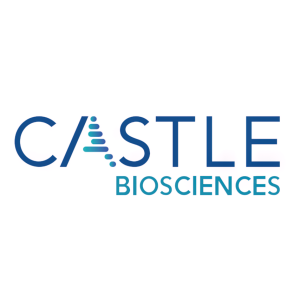TissueCypher® Provides Clinically-Impactful Risk Stratification in Patients with Barrett’s Esophagus
- None.
- None.
Insights
Analyzing...
The TissueCypher Barrett’s Esophagus test can identify patients at a higher or lower risk of developing esophageal cancer than indicated by pathologic diagnoses and clinical risk factors to guide escalated or de-escalated patient management
Data to be highlighted at the 19th ISDE World Congress for Esophageal Diseases
“Current clinical practice guidelines recommend intervention strategies such as close surveillance and endoscopic eradication therapy for Barrett’s patients with low-grade dysplasia due to their increased risk of developing esophageal adenocarcinoma,” said David L. Diehl, M.D., director of the advanced endoscopy fellowship at Geisinger Medical Center and clinical professor of medicine and pathology at the Geisinger Commonwealth School of Medicine. “Based on the data in this study, it is reasonable to conclude that Barrett’s patients with intermediate or high-risk TissueCypher results, regardless of their pathologic diagnosis or clinical risk factors, may benefit from similar, escalated treatment to detect progression early when it is most treatable.”
Details regarding Castle’s presentation are as follows:
PPL01.2 The Tissue Systems Pathology-9 Test Provides Clinically-Impactful Risk Stratification in Patients with Barrett’s Esophagus: Clinical Experience in a Multicenter Cohort
Presenting Author: Michael Yodice, M.D., Department of Gastroenterology and Hepatology at Geisinger Medical Center
Paper #: 303
Session: Presidential Plenary Session
Date & Time: Saturday, Sept. 9, from 9:15-10:30 a.m. Eastern time
Location: Osgoode Ballroom East
In the study, TissueCypher test results ordered by 776 physicians from January 2022 to March 2023 for 4,073 patients with Barrett’s esophagus (BE) were analyzed. Most patients were male (
TissueCypher also identified low-risk subsets of BE patients with diagnoses of indefinite for dysplasia (IND) and LGD who had similar risk of progression to patients with NDBE, and whose care could be de-escalated and safely managed using a surveillance-only approach.
These data demonstrate that TissueCypher provided impactful risk stratification, independent of clinicopathologic risk factors, to enable risk-aligned management of BE patients. This included objective information to support surveillance-only management for patients with a low risk of progression and escalated surveillance/treatment for patients at high risk of progression. Further, the data suggest that broad use of TissueCypher test results could increase the early detection of NDBE patients at a higher risk of progression – patients whose progression may be missed by the current standard of care surveillance recommendations – who may benefit from escalated care to prevent progression to EAC.
About TissueCypher® Barrett’s Esophagus Test
The TissueCypher Barrett’s Esophagus test is Castle’s precision medicine test designed to predict future development of high-grade dysplasia (HGD) and/or esophageal cancer in patients with Barrett’s esophagus (BE). The TissueCypher Barrett’s Esophagus test is indicated for use in patients with endoscopic biopsy confirmed BE that is graded non-dysplastic (NDBE), indefinite for dysplasia (IND) or low-grade dysplasia (LGD); its clinical performance has been supported by 12 peer-reviewed publications of BE progressor patients with leading clinical centers around the world. The test received Advanced Diagnostic Laboratory Test (ADLT) status from the Centers for Medicare & Medicaid Services (CMS) in March 2022.
About Castle Biosciences
Castle Biosciences (Nasdaq: CSTL) is a leading diagnostics company improving health through innovative tests that guide patient care. The Company aims to transform disease management by keeping people first: patients, clinicians, employees and investors.
Castle’s current portfolio consists of tests for skin cancers, uveal melanoma, Barrett’s esophagus and mental health conditions. Additionally, the Company has active research and development programs for tests in other diseases with high clinical need, including its test in development to predict systemic therapy response in patients with moderate-to-severe psoriasis, atopic dermatitis and related conditions. To learn more, please visit www.CastleBiosciences.com and connect with us on LinkedIn, Facebook, X and Instagram.
DecisionDx-Melanoma, DecisionDx-CMSeq, DecisionDx-SCC, MyPath Melanoma, DecisionDx-UM, DecisionDx-PRAME, DecisionDx-UMSeq, TissueCypher and IDgenetix are trademarks of Castle Biosciences, Inc.
Forward-Looking Statements
This press release contains forward-looking statements within the meaning of Section 27A of the Securities Act of 1933, as amended, and Section 21E of the Securities Exchange Act of 1934, as amended, which are subject to the “safe harbor” created by those sections. These forward-looking statements include, but are not limited to, statements concerning: TissueCypher’s potential to (i) identify patients at a higher or lower risk of developing EAC than indicated by pathologic diagnoses and clinical risk factors to guide escalated or de-escalated patient management; (ii) provide certain benefits to BE patients with intermediate or high-risk TissueCypher results, regardless of their pathologic diagnosis or clinical risk factors; and (iii) increase the early detection of NDBE patients at a higher risk of progression who may benefit from escalated care to prevent progression to EAC. The words “can,” “could,” “may” and similar expressions are intended to identify forward-looking statements, although not all forward-looking statements contain these identifying words. We may not actually achieve the plans, intentions or expectations disclosed in our forward-looking statements, and you should not place undue reliance on our forward-looking statements. Actual results or events could differ materially from the plans, intentions and expectations disclosed in the forward-looking statements that we make. These forward-looking statements involve risks and uncertainties that could cause our actual results to differ materially from those in the forward-looking statements, including, without limitation: subsequent study or trial results and findings may contradict earlier study or trial results and findings, including with respect to the discussion of the TissueCypher® Barrett’s Esophagus test in this press release; actual application of our tests may not provide the aforementioned benefits to patients; and the risks set forth under the heading “Risk Factors” in our Annual Report on Form 10-K for the year ended December 31, 2022, and in our other filings with the SEC. The forward-looking statements are applicable only as of the date on which they are made, and we do not assume any obligation to update any forward-looking statements, except as may be required by law.
View source version on businesswire.com: https://www.businesswire.com/news/home/20230908916833/en/
Investor Contact:
Camilla Zuckero
czuckero@castlebiosciences.com
Media Contact:
amarshall@castlebiosciences.com
Source: Castle Biosciences Inc







